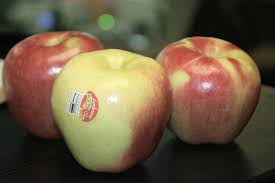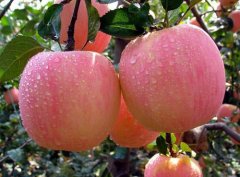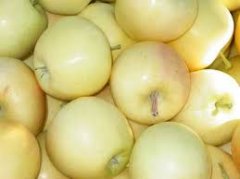High-quality apple variety Shengfang Apple, what is the taste of Shengfang Apple? where is it originally produced?
The Shengfang variety Ambrosia is an attractive medium-sized apple with pink orange / red on a yellow background. Therefore, it is very consistent with modern people's preference for "two-color" apples.
The taste is pleasant and sweet, but one-dimensional taste has no acidity to balance sweetness-which is not necessarily a bad thing. The texture is basically crisp, but not as crisp or hard as Braeburn or Jazz-it's more like the slightly soft tightening that might be found in golden delicacies. Ambrosia benefits from keeping it cold and eating it in the refrigerator, because once it is left in a fruit bowl, the brittleness quickly disappears, when it becomes slightly pear-shaped. If you want to punch the Shengfang variety Ambrosia, it's best to think of it as a red / orange gold delicacy that tastes less sweet. Of course, anyone who likes Golden Crown but wants to be a little different will like the Shengfang variety Ambrosia.
The Shengfang variety Ambrosia originated in western Canada and, like most modern varieties, its production and quality are strictly controlled by PICO (Okanagan Plant Improvement Company), the brand owner in western Canada. New plantations are also being built in the US state of Washington and the Piedmont region of Italy. Although Canada is generally considered a cold climate, the Similkameen and Okanagan valleys in southern British Columbia are semi-arid, with apples grown with grapevines and other warm climate crops.
The Shengfang variety Ambrosia is unlikely to be used for private use, but when growing in commercial orchards, the best rootstock seems to be M26 rather than the more common M9.
Unlike most other modern varieties, Ambrosia is not the result of long-term scientific breeding programs, but stems from the old-fashioned natural way of serving as opportunity seedlings in orchards. Wilfrid and Sally Mennell found Ambrosia in the orchard of the Jonagold tree in Similkameen Valley, British Columbia, western Canada. Therefore, the parent-child relationship is unknown, but it seems to be the intersection between Jonagold and Golden Delicious, while Golden Delicious has previously grown in the same area. In terms of taste and appearance, the Sheng Fang variety Ambrosia is almost exactly what you might expect a cross to look like, its taste comes very much from the golden mixed noodles (remember that Golden Delicious is also one of Jonagold's parents), but the visual appearance is very influenced by Jonathan.

- Prev

Pink Beauty Apple characteristic Origin introduction, Pink Beauty Apple Champagne Flavor planting time
Pink Beauty is an apple variety. It is one of several varieties, and apples that meet the quality standards can be sold under the brand name Pink Lady, which is often called apple champagne. The Pink Lady was originally created by John John Cripps in Dali, Western Australia.
- Next

Aurora Apple, a new apple variety, is the nutrient of Aurora apple a hybrid variety?
Aurora apples are of medium size and have creamy to yellow skin. When growing in cooler areas, these apples can show pink or orange blush. The meat is very crisp, juicy and creamy to yellowish. Aurora apples are sweet, gentle, fresh and with
Related
- A course of planting techniques and methods on how to grow carrots
- How to plant the latest tulips?
- Is it better to pick tea in the morning or in the afternoon? When is the best time for tea to be picked? what is the third or fifth tea?
- Launch Yuanxiao Happy combination Haocha + Tea Yuan healthy Taste
- Penghu Tourism "Fireworks 20 Parade with You"
- 2022 West Lake Happiness holds "Digital Revitalization Voucher" and draws iphone13 and laptop.
- Banqiao Fuzhou social houses are designed to change start-up combined with police elimination to create a safe and livable environment
- The convenient measure of "mechanical weeding" in Xinbei has been abused and the Agriculture Bureau has imposed heavy penalties on the illegal land consolidation.
- Changgeng University Joins Hands with Four Memory Factories to Rescue Memory Talent Shortage
- The list of Taiwan's top 100 MVP managers is listed by the Director-General of the Farmers' Association of Sanxia District.

